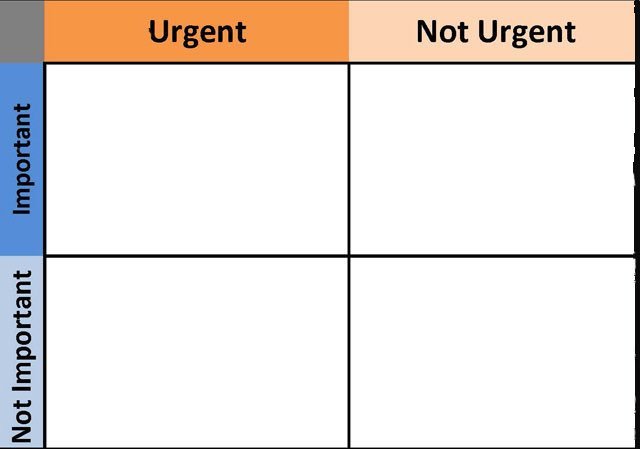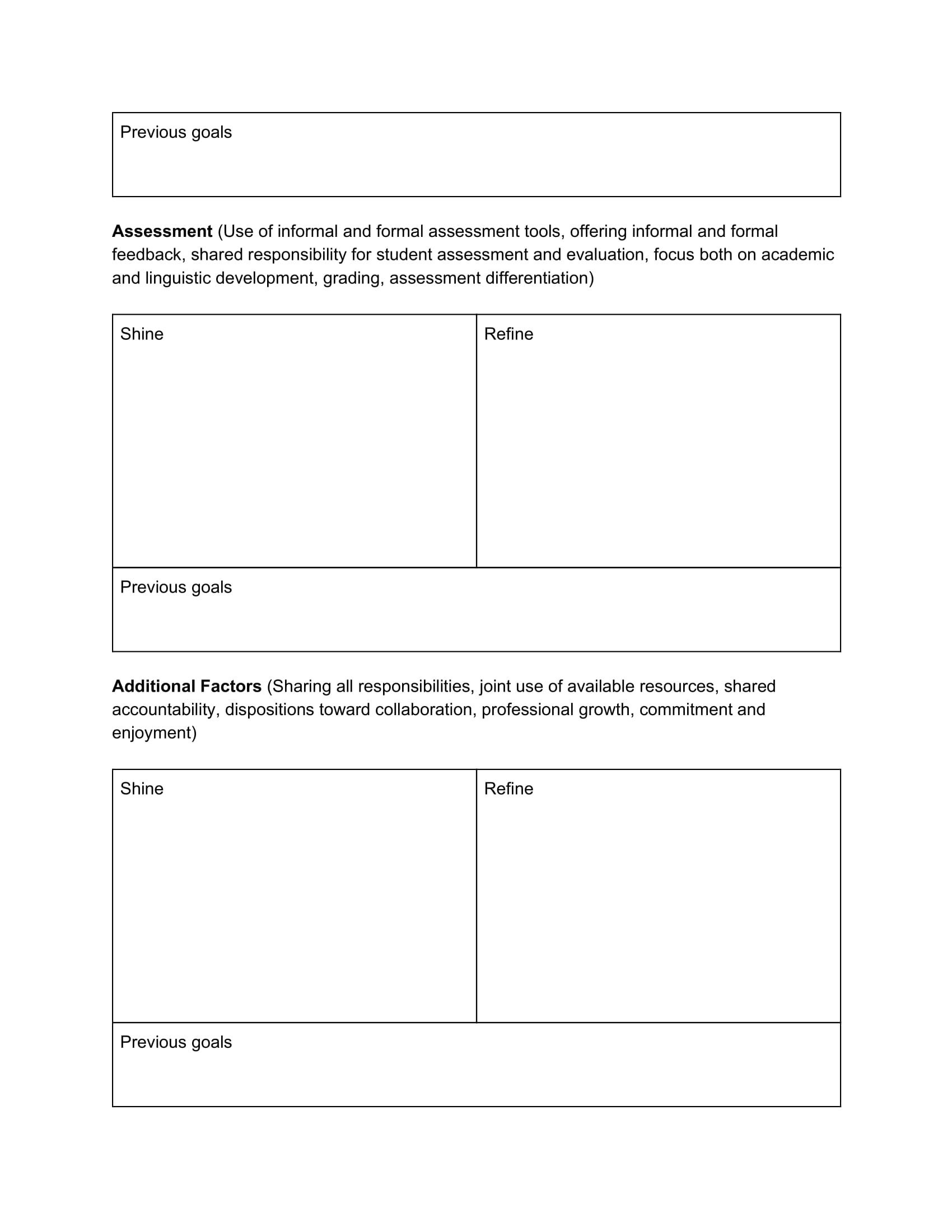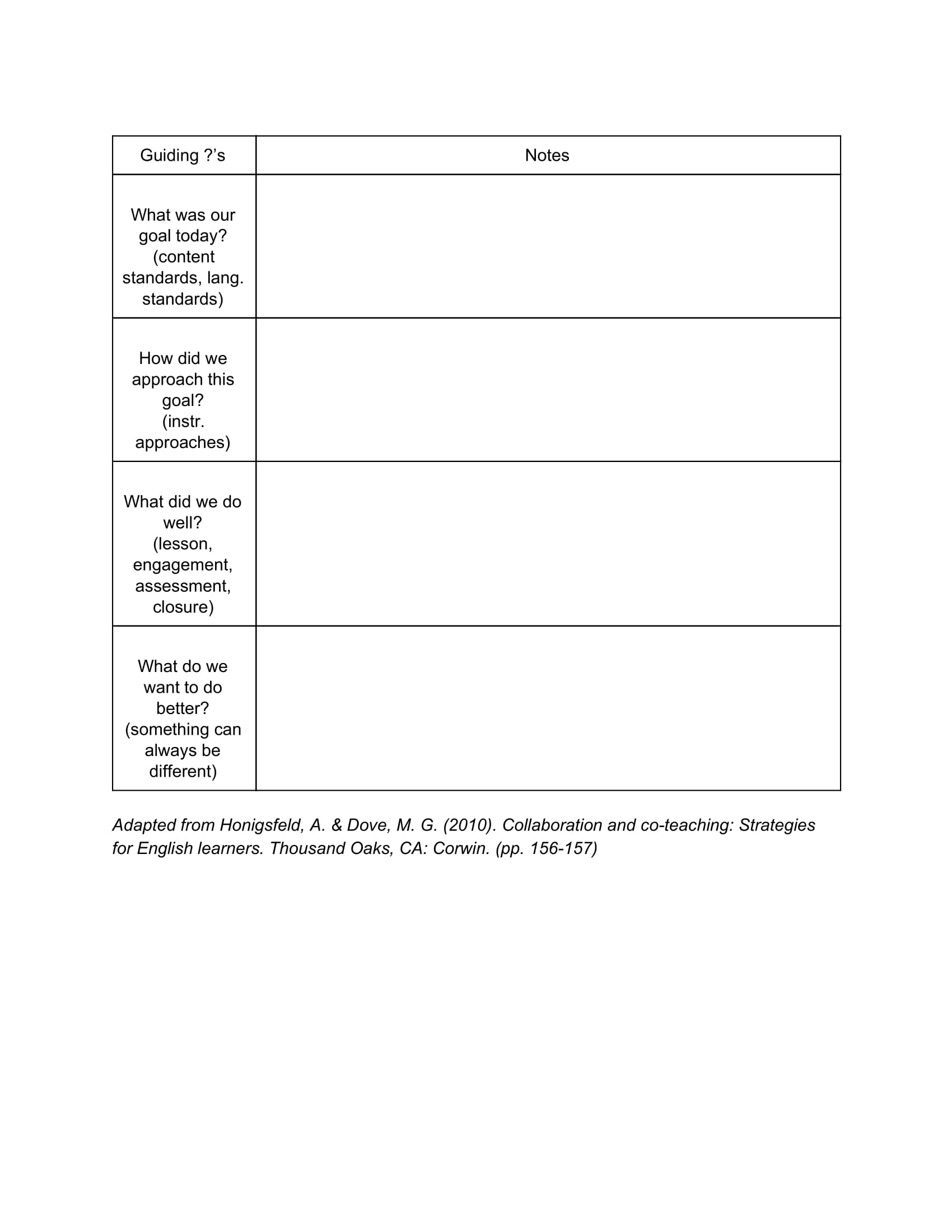Co-Teaching Jitters
New Beginnings
I can’t really call myself a fan of Project Runway, but I enjoy catching a few episodes on Netflix here and there. I love the creativity and thoughtfulness that’s poured into the beautiful garments that these talented people create. My favorite moments, however, usually involve the infamous Tim Gunn. He walks through the workroom and carefully observes each of the contestants’ work in progress, provides constructive (yet hilarious) feedback, and guides contestants through their struggles. One of his most famous taglines is a simple three word sentence; “Make it work”. I just finished my first year working as the English Language Specialist.
Like what Tim Gunn said, I “Made it work” by doing what I could with what tools I had at the time. It was during this time I was introduced to this idea of Co-Teaching and collaborative practice by a close friend and friends in my Twitter PLN. I immediately took to the idea and hit the books. Thankfully, my administration supported me in this endeavor, so I spent the majority of the last school year researching, asking questions, and working closely with colleagues to start a collaborative teaching model from scratch. A lot of gains were made last year; teachers welcomed me into their classrooms, I attended planning meetings with staff, and administration was on board with my initiatives.
As excited as I am to put this careful planning into action, I’d be dishonest if I said that I wasn’t worried too. I need to balance my high expectations with the reality that I will surely have to make adjustments along the way. Like what Tim says, “Make it work”, and I plan on doing just that. I’ve decided to outline my worries not only for myself, but for other Co-Teachers out there (both new and experienced) to elicit some discussion on what has worked for them and struggles they had to overcome.


Gifs from gify.com

Worry: Timing
I’m the only Co-Teacher in an elementary school of 12 teachers from K-5. My assumption last year was that I had to meet with every classroom and every teacher evenly. I organized my work week so that I was in every classroom twice for thirty minute blocks. It’s obvious that this isn’t an effective use of time, but being the only Co-Teacher, is it OK for me to be in certain classrooms and not others? This left me feeling very conflicted with how I should organize my time, but any experienced teacher knows that spreading yourself out too thin isn’t helpful for anyone.
Solution: Prioritize
I’ve decided that the best use of my time is to instead focus my Co-Teaching energies on returning teachers who I know I can work well with while I get to know the new staff members. Seven of the 12 elementary staff are brand new, so these teachers will need time to settle into their classrooms and new environment. While they get their footing, I’ll act more as an ELL coach to assist them with unit mapping and Co-Planning. By doing so, I can be in certain classrooms more frequently and for entire lessons while still helping other teachers meet the needs of our students.
Any experienced teacher knows that
spreading yourself out too thin isn’t helpful for anyone.
Worry: Organization
I’m the first to admit that I’m not exactly the most organized teacher. I tend to hastily create bizarre, poorly thought out filing systems that seem like they would work at first glance, but end up being unsustainable. Keeping appointments and to-do lists is also something I need to work on. Meeting with six different grade levels, administrators, support teammates, and planning for classes fills up my work week quickly. If I don’t write all of my appointments or tasks down, it’ll never get done!
Solution: Google
That’s it – just Google. The biggest take away from a Google Summit that I attended a few years ago was, “Use tech to make tasks you really dislike more manageable”. In this case, the culprit is paper record keeping. I spent a substantial amount of personal time consolidating and organizing my Google Drive folders. I made it a habit to type in every appointment, meeting, or follow up task onto my phone’s google calendar, which syncs to my work email. The only paper record keeping I have is a to-do list on my desk and file folders to organize my materials. The only downside is that it may seem like I’m on my phone often during meetings, so I need to preface that I’m inputting reminders and times. For my friends in China, you’ll have to be a bit more creative. I’ve met loads of Co-Teachers in China who use WeChat and Chinese file sharing options to collaborate electronically. If you have specific questions regarding certain programs, let me know and I can get you in touch with a few friends.
“. . . it’s an equal partnership. . .”
Worry: Relationships
As mentioned before, seven of the 12 elementary teachers are brand new. I’m unaware how much experience they have Co-Teaching (if any at all) or if they’ve taught language learners. Will these teachers be interested in Co-Teaching? Will they be receptive of my expertise in their classrooms? Have they worked so closely with other colleagues in the past? I also need to be sure I have a clear picture of Co-Teaching from the get go to further validate my practice. Getting across the fact that it’s an equal classroom partnership is crucial to ensuring the relationship with classroom teachers remains professional. This will also remove the “helper” label from my presence in classrooms. It was a struggle last year to be on an even playing field with classroom teachers, and I’m hoping to start off the year with clear, defined roles.
Solution: Get to know your colleagues
“The Art of Coaching” by Elena Aguilar helped me tremendously in learning about different ways to build relationships with colleagues. One strategy that I used from the book was “interviewing” teachers at the start of the year one to one. I call it an interview, but it’s really an informal chat so I can get to know each teacher a bit better. I asked questions about where they were from, their family, what they love about teaching, and what are some goals they had for the year. Of course, I didn’t ask the same questions to everyone depending on the overall vibe of the conversation. I also previously asked for permission to pop by informally so they could expect me. I took this time to go over a very general description of my role in the classroom. Another strategy that I found helpful was that taking the first week or two to observe classes, which made a huge positive impact on my relationships with teachers. I took this time to schedule informal observations (with permission, of course) throughout the week so I could get used to the classroom and student dynamics. I took notes on management routines, particular students of need, seating arrangements, etc. I did not observe teaching practices (unless the teacher wanted me to do so for feedback). The sole purpose of this was to familiarize myself with the students and to become a regular face in the classroom community.
You can find Elena Aguilar’s FREE resources, including a survey of questions for teachers on her professional development website here:
Worry: Follow through
Co-Teaching has multiple moving parts. You have administration, classroom teachers, and support staff who all have a part in making Co-Teaching work. A lot went in to planning how to kick off the year and maintain momentum. I tend to delve into a micromanaging mindset when doing any type of organizing, so it’s difficult for me to take a step back and let everything happen naturally, and address any issues as they arise.
Solution: Be flexible
There’s only so much you can plan with teaching. Unlike other professions, a lot of what happens in the classroom happens organically. After all, you have a room full of little people with big personalities. I also have a strong personality, and it may come off as domineering or brash. I need to take a step back, breath, and let loose of control. Reflection is also key on follow through. If there’s consistent reflection, then that naturally requires follow through. I adapted a Co-Teaching reflection sheet on Google Docs that so both the classroom teacher and myself can add to it after Co-Taught lessons. We haven’t decided on the frequency just yet, but once the school year starts we’ll have a better picture of how often we want to reflect on our Co-Taught lessons.
Below are two templates that I adapted from Maria Dove and Andrea Honigsfeld’s “Collaboration and co-teaching: Strategies for English learners”
Takeaways
Co-Teaching is still a very new concept to me. I’ve done the research, so now it’s time to apply all of my knowledge to see how it really works. It’ll take time, practice, and a lot of reflection, but I truly believe I have all of the tools that I need to succeed. I must remember to be flexible and compromise as I go along perfecting my craft. Finally, as I prepare for the start of the school year, Tim Gunn’s words ring through my mind;
“Make it work!”.





What a wonderful reflection and so helpful to those in similar situations. “Getting across the fact that it’s an equal classroom partnership.” That statement is so important. Setting the stage for it from the beginning of the year should help a lot.
Thanks mom! It’s an unfortunate stigma that comes with the job, but I hope to set the example from day 1 so I can make my role explicit to all staff members.
I love your reflection here. All of us that support content teachers can take something from your insight. I especially like how you are calling out the worries we all have but also offering a solution for each. Your passion is obvious, Justin. Thank you for sharing it with us.
Thanks, Carol! My aim for this blog is to be as down to earth as I can while providing practical solutions. I’m all about being practical to save energy and time, and I’m sure other teachers feel the same way!
Justin,
I am the Learning Support Coordinator for my school and I do a lot of what you’re doing. Great post. Hope co-teaching goes seemless for you this year! You’re on the right track for certain!! Love co-teaching!! 😘
Thank you so much for the reassurance!